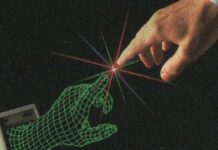Gravity is a fundamental force of the universe that attracts objects toward each other. It is the force that keeps the planets in orbit around the sun and holds us firmly on the surface of the earth. Gravity is one of the four fundamental forces of nature, alongside electromagnetism, strong nuclear force, and weak nuclear force. But what might cause gravity to exist? Scientists have been trying to answer this question for centuries, and although we have a good understanding of how gravity behaves, the underlying cause is still unknown. In this article, we will explore some of the theories that have been proposed to explain the existence of gravity.
Contents
Newton’s Theory of Gravity
The first comprehensive theory of gravity was proposed by Sir Isaac Newton in the late 17th century. According to Newton, gravity is an attractive force that exists between any two objects in the universe. The force of gravity is proportional to the masses of the objects and inversely proportional to the square of the distance between them. This means that as the distance between two objects increases, the force of gravity decreases, and vice versa.
Newton’s theory of gravity was revolutionary at the time, and it provided a simple and elegant explanation for many of the phenomena observed in the universe, such as the motion of the planets around the sun. However, Newton’s theory was incomplete, as it did not explain how gravity worked at a fundamental level.
Einstein’s Theory of General Relativity
In the early 20th century, Albert Einstein proposed a new theory of gravity, known as general relativity. According to Einstein, gravity is not a force but a curvature of spacetime caused by the presence of mass and energy. In other words, objects with mass and energy warp the fabric of spacetime, creating a curvature that causes other objects to move toward them. This curvature is what we perceive as the force of gravity.
Einstein’s theory of general relativity was a breakthrough in our understanding of gravity, and it has been confirmed by countless experiments and observations. It has also led to many predictions, such as the existence of black holes and the bending of light by gravity, which have been confirmed by observation.
Gravitational Waves
In 2015, the Laser Interferometer Gravitational-Wave Observatory (LIGO) made a groundbreaking discovery – the detection of gravitational waves. Gravitational waves are ripples in spacetime that are created when massive objects, such as black holes or neutron stars, collide. These ripples travel through the universe at the speed of light and can be detected by extremely sensitive instruments on Earth.
The detection of gravitational waves was a major milestone in physics, as it confirmed a key prediction of Einstein’s theory of general relativity. It also opened up a new field of astronomy, known as gravitational wave astronomy, which allows us to study the universe in a completely new way.
Quantum Gravity
Despite the success of general relativity, it is not a complete theory of gravity. General relativity is a classical theory, which means that it does not take into account the principles of quantum mechanics. This has led to a major problem in physics, known as the “quantum gravity problem.”
Many physicists believe that the solution to the quantum gravity problem lies in the development of a theory of quantum gravity, which would combine the principles of quantum mechanics with the principles of general relativity. Several theories of quantum gravity have been proposed, including loop quantum gravity, string theory, and causal dynamical triangulation. However, none of these theories has been proven, and the search for a complete theory of quantum gravity continues.
What might cause gravity to exist?
So what might cause gravity to exist? well despite centuries of research and many advances in our understanding of gravity, scientists do not yet have a complete answer to the question of what causes gravity to exist. We have developed theories such as Newton’s theory of gravity and Einstein’s theory of general relativity that describe how gravity behaves, but these theories do not provide a fundamental explanation of the underlying cause of gravity.
There are many open questions and challenges in the field of gravity research, including the search for a theory of quantum gravity that can reconcile general relativity with quantum mechanics. The discovery of gravitational waves has also opened up new avenues for research, and scientists continue to study gravity to gain a deeper understanding of the universe and the fundamental forces that govern it.
Conclusion
Gravity is one of the most fundamental forces of nature, and although we have a good understanding of how it behaves, the underlying cause of gravity is still unknown. Newton’s theory of gravity provided a simple and elegant explanation for many of the phenomena observed in the universe, but it was incomplete. Einstein’s theory of general relativity was a breakthrough in our understanding of gravity, but it is not a complete theory. The search for a complete theory of quantum gravity continues, and it is likely to be one of the biggest challenges in theoretical physics in the coming decades.
Sources
- Newton, I. (1833). Philosophiae naturalis principia mathematica (Vol. 1). G. Brookman.
- Newton, I. (1999). The Principia: mathematical principles of natural philosophy. Univ of California Press.
- Carmichael, R. D. (1923). The Meaning of Relativity. By Albert Einstein.(Princeton lectures translated into English by EP Adams.) Princeton University Press. 1922. Science, 57(1483), 642-643.
- Einstein, A. (1920). Relativity: The special and general theory, by Albert Einstein. Translated by Robert W. Lawson., New York: Henry Holt and Company.
- Thorne, K. S. (1995). Gravitational waves. arXiv preprint gr-qc/9506086.
- Misner, C. W., Thorne, K. S., & Wheeler, J. A. (1973). Gravitation. Macmillan.
- Rovelli, C. (2004). Quantum gravity. Cambridge University Press.
- Penrose, R. (2004). A Complete Guide to the Laws of the Universe (pp. 243-246). BCA.
- Becker, K., Becker, M., & Schwarz, J. H. (2006). String theory and M-theory: A modern introduction. Cambridge University Press.
FACT CHECK: We strive for accuracy and fairness. But if you see something that doesn’t look right, please Contact us.
DISCLOSURE: This Article may contain affiliate links and Sponsored ads, to know more please read our Privacy Policy.
Stay Updated: Follow our WhatsApp Channel and Telegram Channel.
















Interesting explanations – Gravity has always fasicinated me. Is the earth round or is it a flat surface??